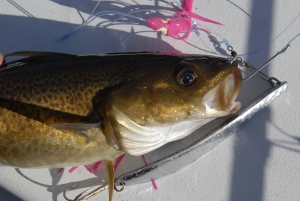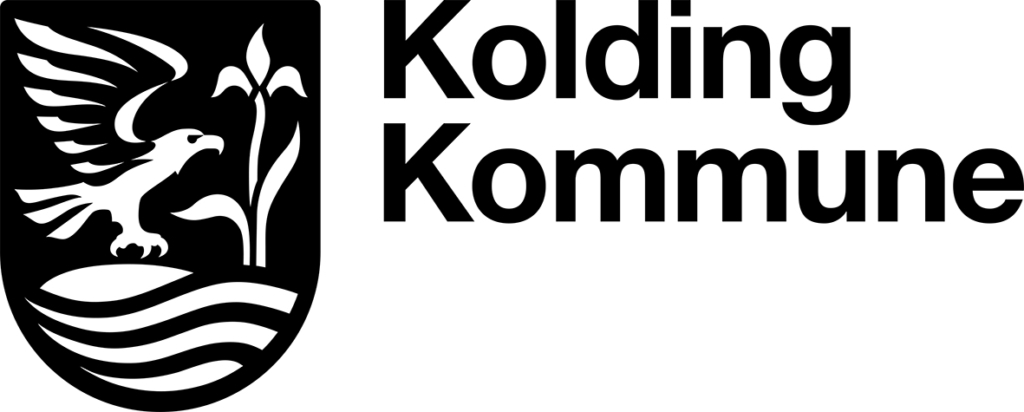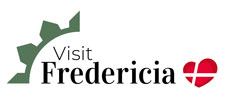The Otter (Re)Claims Funen
Article by Mads Syndergaard, Agricultural technologist, Natur&Miljø – 4/1 2019 – as translated by Nanna Speyer Schønemann
Until the middle of the twentieth century, all of Denmark was home to a vigorous, yet discrete population of otters.
As nocturnal animals, they were there, but not many people encountered them. Truthfully, one mostly saw them if they turned up as drowned bonus catches in fishing traps. The fish were surely angry with them, as until the invention of NylonTM, otters could gnaw themselves free from the traps, which were then destroyed.
Up through the 19th century, our fresh waters went through a dramatic decline, as a result of sewage from households and industry, and not least the surplus of nutrients from agriculture. This led to a severe reduction in the living conditions for fish in our lakes and streams, and as the otter’s diet consists of fish, it suffered just as much. In practice, the otter was properly extinct from Funen around 1960; at least, there were only sporadic reports of otters on the island in the period between approximately 1960 and until the mid-2000s.
Around 1980, the otter was reduced to a small population in north-western Jutland, but since then, it has thankfully gone in the other direction. Improved sewage treatment and a greater awareness regarding industrial waste has led to many of our water streams “springing back to life”, and awareness surrounding the fate of the otter, has led to the establishment of numerous fauna passages under roads with heavy traffic, first in north-western Jutland, since in the rest of Jutland. The otter was declared for total preservation in 1967, and the fishermen in otter-areas were required to put bars on their fishing traps, to prevent the remaining animals from drowning as bonus catches in the traps. This has all led to the otter population experiencing a dramatic comeback in Jutland. It is now so big, it can produce enough population overflow to colonise surrounding areas, not least of all, Funen.
The first infant signs of the otters on Funen, appeared in 2007, in the Odense River area. Today, we know that these animals with great certainty migrated from Jutland, so they swam across the Little Belt in order to get that far, and were therefore certainly present in the north and western municipalities of Funen. They were never found there though, probably because no one was looking for them. It is quite typical that the first otters found, were killed in traffic; that is, the findings were not the result of searches, but were random.
In 2017, the Ministry of Environment of Denmark conducted a greater, more goal oriented search on Funen, and found certain proof (excrement) in no less than 28 different locations on the island. And in the first six months, I have myself, as part of my education as agricultural technologist at University College Lillebælt, conducted a search in Middelfart Municipality. The search focused on the places in the municipality, where there were the biggest risk of conflict between otter and car traffic, as in places where traffic roads cross water streams and wet lands, where there COULD be otters. The results were overwhelming; in no less than 10 of the 15 researched locations, did I find proof of the presence of otters, and that was just near the big, heavily trafficked roads in the municipality. Aside from that, we know of otters in more locations, where the risk of conflict with car traffic is mostly lessened, so overall there is no doubt that the otters have definitely come home to Funen once again – they are so to speak “everywhere”, but we do not see them, for they are shy, nocturnal animals, who will do anything to keep themselves under the radar.
In the broader population, the otter is often confused for the beaver, but there is a reason to highlight that otters do not chop down trees or build dams – one actually only notices its presence in an area, if one attentively examines mud banks for the characteristic traces, or find their excrement on rocks and other high lying places in the water streams – these findings are welcome highlights of any excursion, for even though we do not see the animals, there is still great joy in knowing that they ARE out there, and that they are an un-dismissible sign that our fresh water has actually gotten better in the past years.
At http://www.kongeaastien.dk/en/content/animal-trails you can learn, how you can track the otters yourself in your surrounding areas, and in the little video below you can see some of the Funen otters in action, on their way underneath the roads in Middelfart Municipality.

The Porpoise
In the Little Belt, you will find one of the world’s largest populations of porpoises. Read more about the little whale here.

The Danish Orchids

The Sea Trout
A joy for the eyes and a gift for the dining table. Read more about the sea trout here.

The Cod







